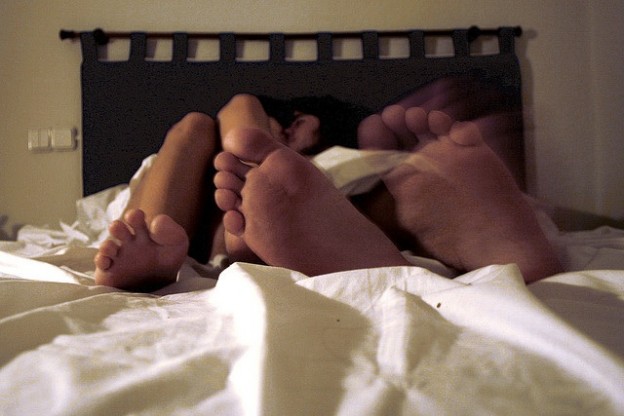New Insights Into Desire Discrepancy
I’ve always been interested in sexual desire, and with the interest I have in couple dynamics, the concept of sexual desire discrepancy is naturally also of great interest to me. A colleague and I have a paper in press on the topic, I wrote my qualifying exams on the topic, and my dissertation will examine desire discrepancy (among other things). Needless to say, I’ve been particularly immersed in the desire discrepancy literature lately. Sexual desire discrepancy is when one member of a couple has higher (or lower) sexual desire relative to their partner’s sexual desire.
The New Insights
A paper was recently published in the Archives of Sexual Behavior by Willoughby and Vitas that examined desire discrepancies entitled “Sexual desire discrepancy: The effect of individual differences in desired and actual sexual frequency on dating couples“. The study examined 8,096 dating couples (yea, that’s right, 16,192 individuals…impressive sample size…especially since they are couples) who were not married.
The length of relationship in this sample ranged pretty widely:
- 26% in a relationship from 0 to 6 months
- 16% from 6 to 12 months
- 52.5% from 1 to 5 years
- 5.1% more than 5 years
This study examined the discrepancy between men and women’s desired and actual sexual frequency, which is a unique measure compared to previous studies. Desire discrepancy is often calculated by subtracting the men’s score from the woman’s score (or vice versa) on a sexual desire measure. So this study is providing new insights by giving us a more objective measure of desire discrepancy.
The main findings of this study:
- Men, on average, had a greater discrepancy between their desired and actual sexual frequency compared to women
- Discrepancy between desired and actual sexual frequency was related to lower relationship stability
- In relationships with short relationship duration, discrepancy between desire and actual sexual frequency was associated with higher relationship satisfaction (authors argue this may be due to the incentive this provides for improving the relationship early on)
- Gender moderated the link between discrepancy and relationship satisfaction, indicating that gender alters the strength of this link, and this effect was stronger for women
- Relationship length also moderated the link between discrepancy and relationship satisfaction, indicating that relationship length alters the strength of this link, and this effect was stronger for relationships of shorter duration
Conclusion
So, this is a pretty complex study that used a large sample of couples, and a unique measure of desire discrepancy. Our understanding of desire discrepancy is still in its infancy, with only a handful of published studies on the topic. However, with the increased acknowledgment of the importance of considering the context when conducting research on sexual desire, I predict we are going to see a lot more attention paid to these dynamics.
Reference: Willoughby, B.J., & Vitas, J. (2011). Sexual desire discrepancy: The effect of individual differences in desired and actual sexual frequency on dating couples. Archives of Sexual Behavior, DOI: 10.1007/s10508-011-9766-9.
This post was originally on Kinsey Confidential.
 Kristen Mark
Kristen Mark



